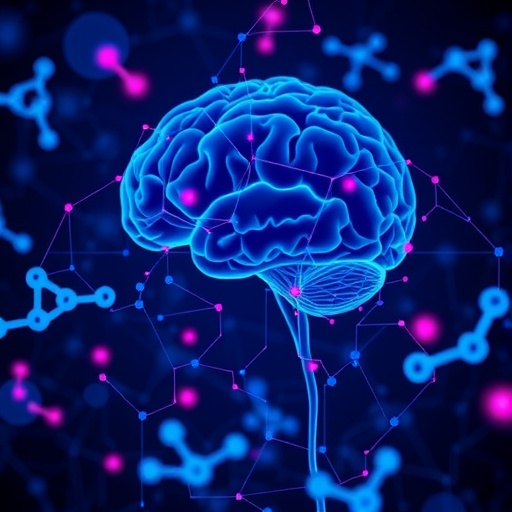In a groundbreaking study poised to transform our understanding of adolescent mental health, researchers have unveiled a pioneering method that harnesses the power of integrative metabolomics combined with cutting-edge machine learning to identify biological markers linked to social anxiety disorder (SAD) in teenagers. This breakthrough represents a significant leap forward from traditional psychological assessments, offering a more objective, data-driven pathway to diagnosis and personalized treatment.
Social anxiety disorder, characterized by an intense fear of social situations and pervasive self-consciousness, profoundly affects the adolescent population. Historically, diagnosing SAD has relied heavily on subjective behavioral evaluations and self-reported symptoms, which can be influenced by social stigma and personal bias. The novel approach detailed in this study employs a holistic metabolomic analysis—a comprehensive profiling of small molecules in biological samples—to detect subtle biochemical alterations indicative of SAD, thereby facilitating earlier and potentially more accurate identification.
The research team collected biological samples from a cohort of adolescents diagnosed with social anxiety disorder alongside matched controls. Utilizing state-of-the-art mass spectrometry and nuclear magnetic resonance technologies, they generated extensive metabolomic datasets capturing a wide spectrum of metabolites. These datasets reflect the intricate biochemical networks operating within the body and the brain, encompassing neurotransmitter metabolites, lipid profiles, amino acid derivatives, and energy metabolism intermediates.
Single-layer metabolomic analyses often face challenges in discerning reliable biomarkers due to the complex interplay of biological pathways. To circumvent these limitations, the researchers integrated machine learning algorithms, including random forests and support vector machines, which adeptly handle high-dimensional data. By training these models on metabolomic profiles, they achieved remarkable classification accuracy, pinpointing specific metabolites strongly associated with SAD.
Among the identified biomarkers were perturbations in neurotransmitter-related metabolites such as gamma-aminobutyric acid (GABA) and glutamate, neurotransmitters fundamentally involved in anxiety regulation. Additionally, alterations in lipid metabolism were uncovered, highlighting the possible role of membrane fluidity and signaling in the pathophysiology of social anxiety. Elevated markers of oxidative stress further suggested neuronal vulnerability in affected adolescents, underscoring the multifaceted biochemical landscape associated with this disorder.
The integration of metabolomics with machine learning not only enhanced diagnostic precision but also illuminated potential mechanistic pathways underlying SAD. Intriguingly, several metabolites linked to the gut-brain axis emerged, aligning with burgeoning evidence that gastrointestinal health influences mental well-being. This discovery could open new avenues for therapeutic interventions targeting microbiota-mediated metabolic pathways.
This research stands out by transcending traditional siloed approaches in psychiatry, embracing systems biology to unravel the biochemical signatures of mental disorders. The predictive models developed demonstrated the capacity to differentiate SAD from other anxiety spectrum disorders, emphasizing the technique’s specificity and clinical utility. Such differentiation is crucial for tailoring personalized treatment regimens, whether pharmacological or psychotherapeutic.
An exciting aspect of this study is its potential scalability. The non-invasive nature of metabolomic sampling, often involving blood or saliva, combined with automated computational analysis, paves the way for widespread clinical application. Routine screening of at-risk adolescent populations could facilitate early intervention, thereby improving prognoses and reducing the long-term psychosocial impact of social anxiety disorder.
Furthermore, this work highlights the emerging synergy between artificial intelligence and biomedical research, showcasing how machine learning can extract meaningful patterns from complex datasets that would elude conventional statistical methods. This synergy between technological innovation and biological insight exemplifies the future of mental health diagnostics.
Notably, the findings challenge the misconception that social anxiety is solely a psychological phenomenon, reinforcing its biological underpinnings. This perspective holds profound implications for stigma reduction, encouraging a more compassionate and science-based societal dialogue around mental illness.
The study’s rigorous validation procedures, including cross-cohort replication and longitudinal follow-ups, reinforce the robustness of the biomarkers identified. The temporal stability of metabolomic signatures further supports their utility in monitoring disease progression and therapeutic response, heralding a new era of precision psychiatry.
While promising, the authors acknowledge the necessity for larger, multi-ethnic cohort studies to ascertain the generalizability of their findings and to explore the influence of environmental factors, such as diet and stress, on metabolomic profiles. Integration with genetic and epigenetic data could also enrich the biological narrative of social anxiety.
In summary, this landmark study presents an innovative, interdisciplinary strategy that couples integrative metabolomics with advanced computational modeling to spotlight biomarkers of adolescent social anxiety disorder. By unveiling the biochemical fingerprints of SAD, it lays the groundwork for more accurate diagnosis, personalized treatment, and ultimately, a better quality of life for affected adolescents worldwide. This fusion of metabolomic science and machine learning not only pushes the boundaries of psychiatric research but also embodies a hopeful vision for the future of mental health care.
Subject of Research:
Adolescent social anxiety disorder and its underlying biochemical biomarkers.
Article Title:
Integrative metabolomics and machine learning identify biomarkers of adolescent social anxiety disorder.
Article References:
Lai, JY., Yang, BB., Ju, PJ. et al. Integrative metabolomics and machine learning identify biomarkers of adolescent social anxiety disorder. World J Pediatr (2025). https://doi.org/10.1007/s12519-025-00984-6
Image Credits: AI Generated
DOI: https://doi.org/10.1007/s12519-025-00984-6




